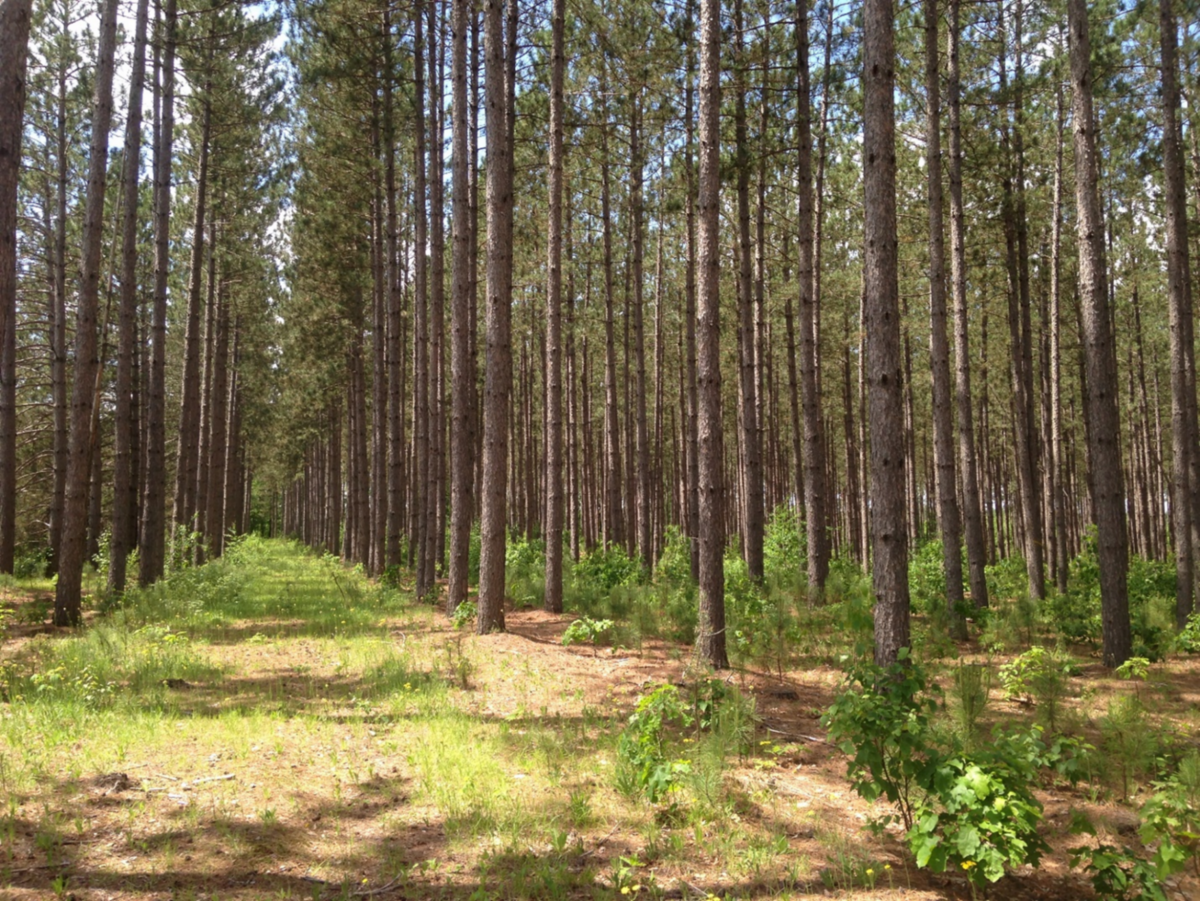Overview
The purpose of this field trial is to assess natural regeneration of red pine using shelterwood and expanding gap regeneration treatments. We will also monitor the health effects on seedlings associated with the fungal disease Diplodia sapinea, which is present on site. To our knowledge, naturally regenerating red pine in this part of the state, on this native plant community, has not be attempted before. That said, MN DNR is currently preparing a case study in Park Rapids, MN examining release of advance red pine regeneration following final harvest on another FDc23 site.
This case study presents pre-treatment data. Data will be added in future years after successive treatments and assessments are complete. Crop tree and vegetative competition numbers and condition will be monitored.
If successful, natural regeneration of red pine would result in a significant improvement in net revenue compared to artificial regeneration. Ultimately, only a few hundred stems per acre of red pine fully exposed to sunlight and growing into merchantable size classes are needed to meet regeneration objectives (minimum of 400 trees per acre and 75% stocking at year 10 per MN DNR Regeneration Monitoring Procedures and Standards).
Diplodia sapinea is a fungus that causes shoot blight, branch death, decreased growth, and occasionally death to several species of pine including red pine. One of the assumed reasons that multi-aged red pine stands are uncommon in Minnesota is that Diplodia shoot blight limits naturally regenerating healthy and acceptably abundant red pine in the understory. This assumption is based on several university, state agency, and U.S. Forest Service studies, as well as years of forester observation. Diplodia is easily spread to pine seedlings and saplings from nearby mature trees, therefore the current recommendation is to grow young red pine without an overstory of red or jack pine, or at a distance that is at least twice the height of adjacent red and jack pine stands. By far the most common prescription for re-establishing red pine in mature stands is to clearcut, prepare the site mechanically or chemically and then plant.
While it goes against conventional practice, we feel there are several reasons why natural regeneration has a chance of success on these sites:
- The author has observed a number of examples of successful natural red pine regeneration occurring in small openings adjacent to mature red pine stands infected with Diplodia in this area of the state.
- The study will compare two different natural regeneration techniques, not just one, to a conventional final harvest followed by site prep and planting. The prescriptions include:
-
- Shelterwood using selective thinning roughly every seven years to release crop trees and to open up the forest floor for regeneration, then final harvest
- An “expanding gap” shelterwood every 7 years, with the first entry initiating the gaps and subsequent entries expanding the size of the gaps
- Conventional red pine silviculture system, thinnings approximately every 7 years until rotation age, then a clearcut with reserves regeneration harvest followed by site prep and planting.
- While natural regeneration practices for red pine have often been declared a “failure” within 3 to 5 years, at least two research papers (Ahlgren, C.E. 1976 and Bergeron, Y., and Brisson, J. 1990) indicate that natural stands can take more time (up to 10 years) to recruit the next cohort following a large disturbance. With this in mind, the plan on these sites is to begin the regeneration/recruitment phase two thinning entries prior to the final harvest. By overlapping the regeneration phase with thinning harvests, we can extend seedling recruitment to mimic natural processes without letting ground sit fallow.
- We anticipate that the open growing environment of the expanding gap treatment will reduce environmental conditions favorable to Diplodia infection. The expanding gaps will also allow us to avoid logging damage to seedlings during subsequent stand entries.
- High rates of Diplodia infection do not necessarily mean that natural regeneration won’t work, because the presence of Diplodia shoot blight on red and jack pine is not always the death knell for them. This is especially true if there is no overstory and they are fully exposed to sunlight. It is possible that hardwood competition may be the more important limiting factor when attempting to regenerate to red pine naturally, as has been observed on the Chippewa National Forest in a variable retention harvest experiment in a red pine plantation.
- The NPC (FDc23) found on this study site seems to be a good candidate for natural red pine regeneration trials. According to the establishment and recruitment table in the Silviculture Strategies website, red pine is ranked as good for establishment of regenerants but only fair for seedling recruitment to larger size classes in mature forest conditions. This indicates that red pine is able to become established in the understory but struggles to recruit to larger size classes in modern forests, presumably from vegetative competition and lack of sunlight. The silvicultural strategy we are applying with this prescription is to maintain FDc23 forests as would periodic surface fire, creating medium to large canopy gaps to control the light environment. (Link to FDc23 web page).
Successful implementation of these treatments may result in a fully stocked red pine stand comprised of trees established over an extended period (up to ten years). We also expect more species diversity and a more complex stand structure than in the existing plantation. This has the potential to benefit multiple wildlife species, increase resistance to insect and disease outbreaks, and increase stand resilience to climate change.
Pre-trial data will be shared now, however this study will continue to be updated with periodic field data collection and updates for up to 30 years. It should be noted that even though there are abundant natural red pine seedlings in the stand now, the regeneration recruitment phase will not actually begin in earnest until after the next thinning.
Silviculture Objective(s)
- Establish a fully stocked red pine stand from natural regeneration.
- Reduce regeneration costs.
- Assess the success of two prescriptions to naturally regenerate red pine compared to the traditional artificial regeneration prescription.
- Assess impacts of Diplodia on red pine natural regeneration.
- Create a more complex stand structure and composition to benefit multiple wildlife species, increase resistance to insects and disease outbreaks, and increase stand resilience to climate change.
Pre-treatment stand description and condition
Stand establishment and management history:
The current stand was established as a plantation in 1958 and has had at least three thinnings: a row thinning in 1995 and selective commercial thinnings in 2009 and 2018. Target residual basal area (BA) of the commercial thinnings was 90ft2.
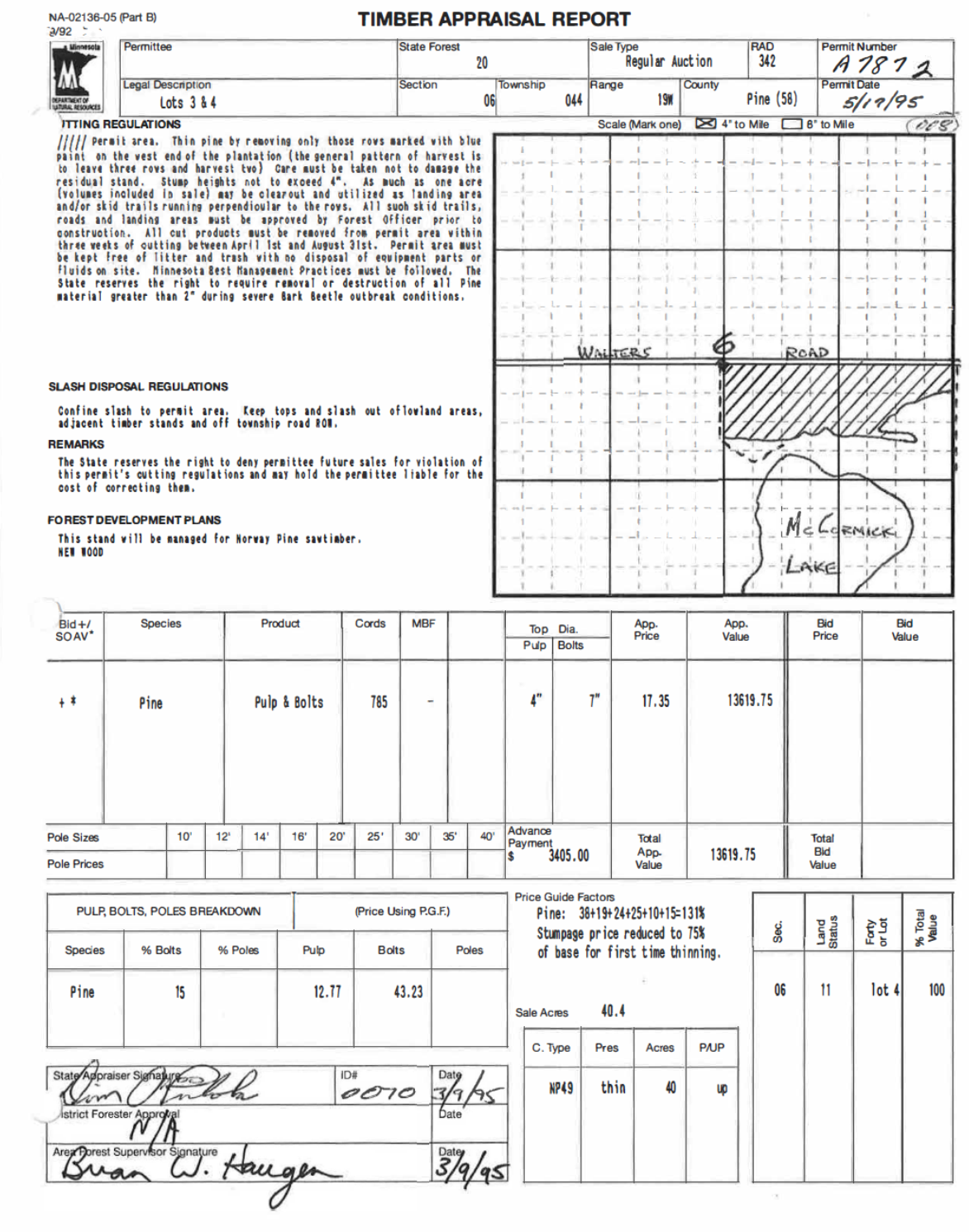
Figure 1: Timber appraisal report from the 1995 thinning harvest
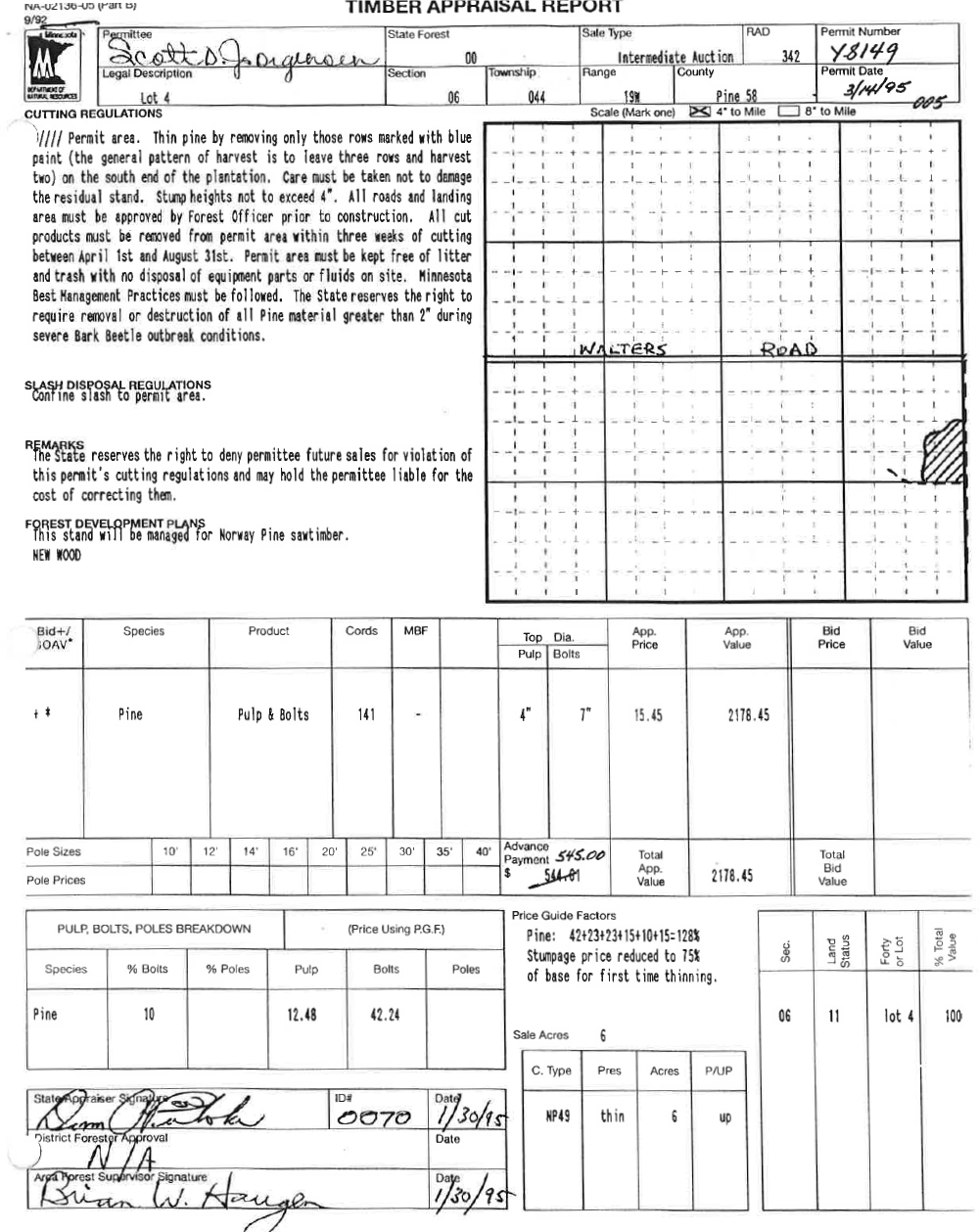
Figure 2: Timber appraisal report from the 1995 thinning harvest
Pre-treatment species composition:
The stand overstory is a nearly pure red pine stand with trees averaging about 15 inches in DBH prior to the 2018 thinning.
There is a significant amount of natural red pine and other species seedling regeneration in the understory and in stand openings in each of the three treatment blocks. See the pre-treatment growth and stocking section for details.
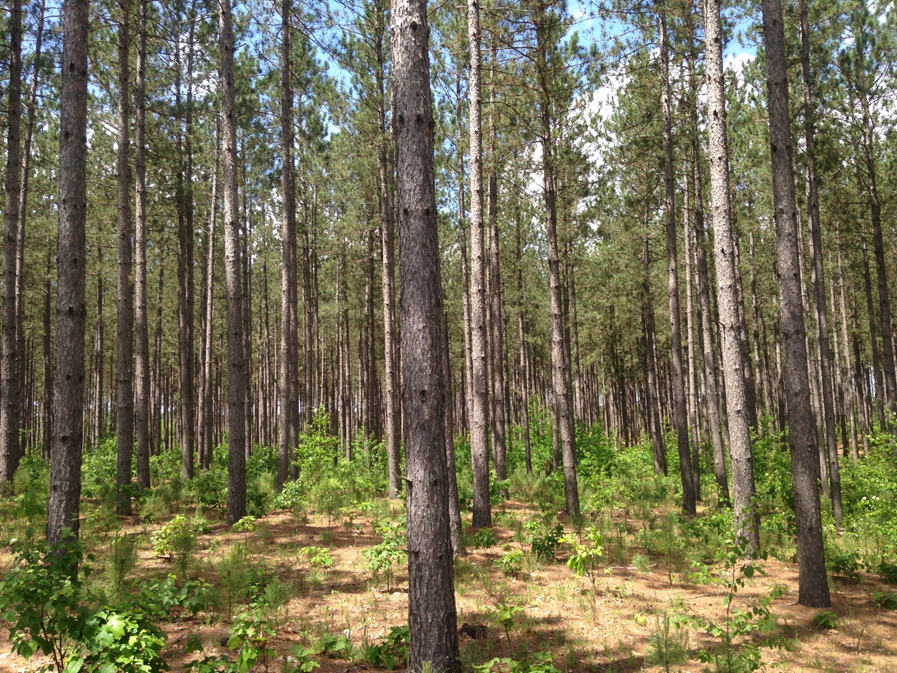
Figure 3: The stand in 2017
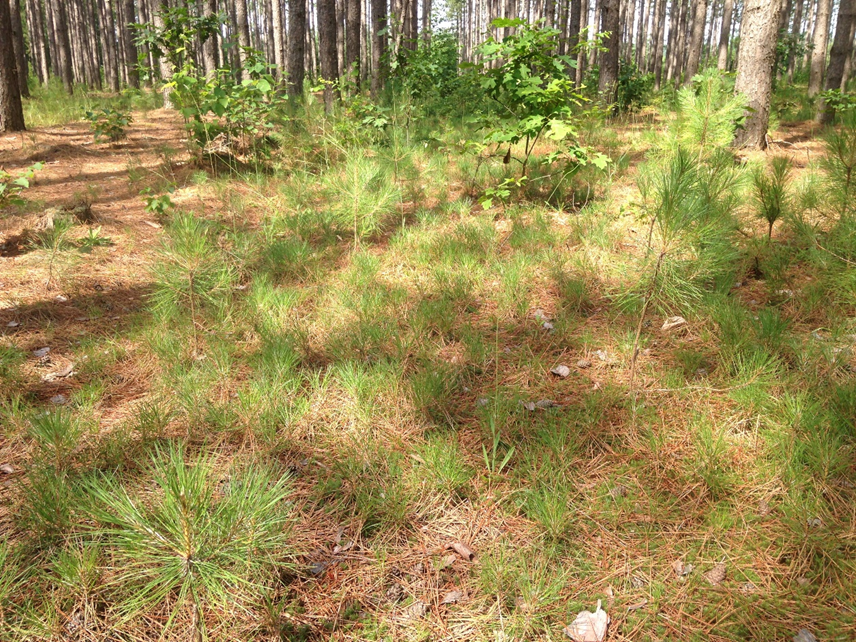
Figure 4: Stand understory in 2017 showing abundant red pine seedlings
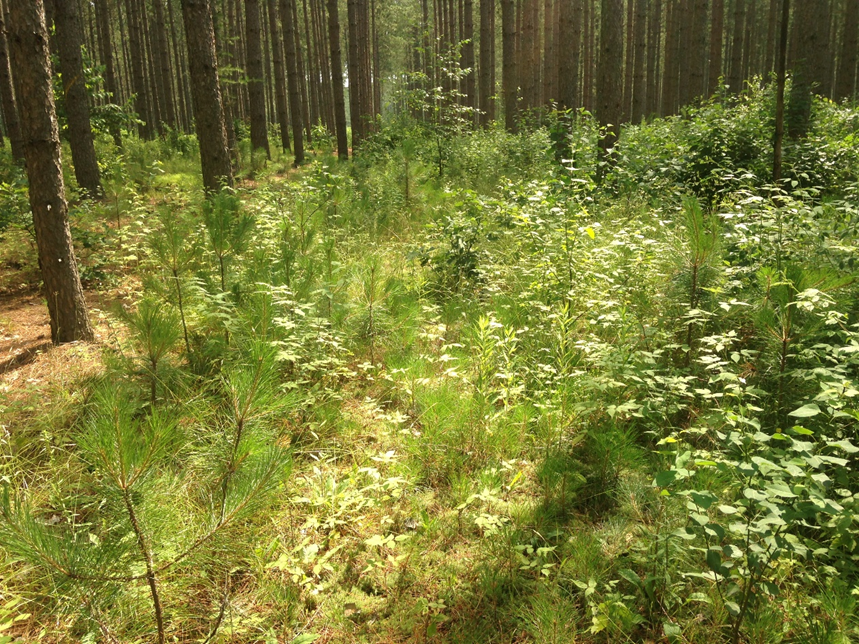
Figure 5: Stand understory in an opening in 2017
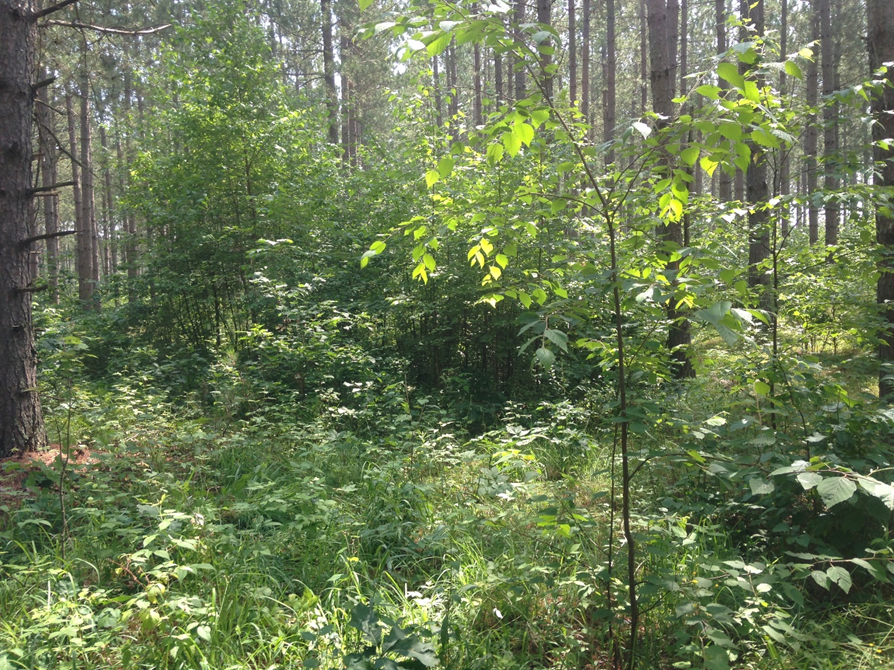
Figure 6: Another shot of understory in an opening in 2017
Pre-treatment growth and stocking:
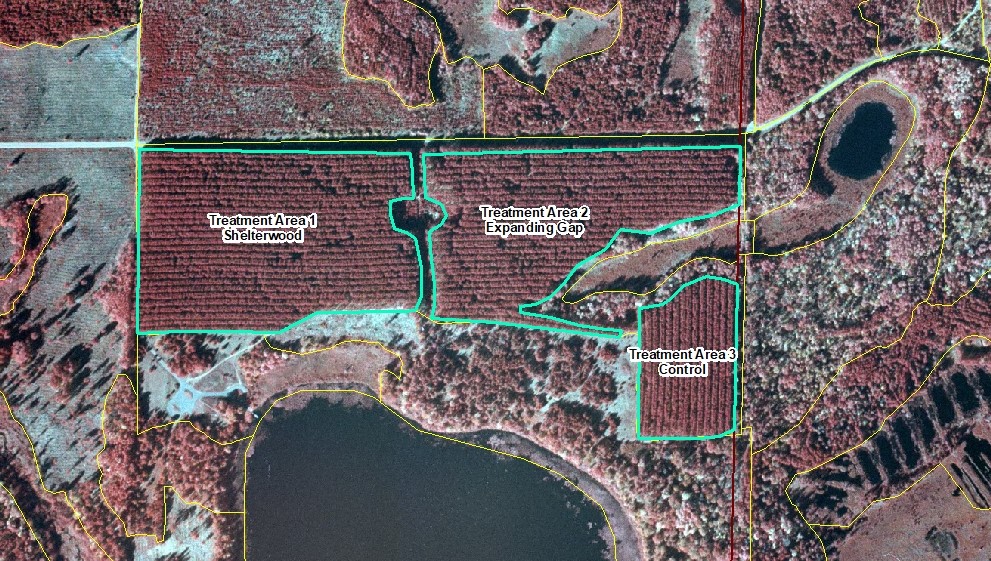
Figure 7: Case study treatment blocks
Regeneration and vegetative competition data was collected separately for each block in the summer of 2019 to enable future assessment of the three different silvicultural prescriptions (Tables 2-4). Diplodia was common in plots in each block.
Block One:
This block was fully stocked with over 6400 red pine seedlings per acre. The red pine regeneration appeared to be prospering around the pockets of competition.
Table 1. Tree regeneration and competition density, height and deer browse % affected – Block 1. Based on sampling from 15 plots 1/500th ac each.
|
Species |
Stocking % |
Trees/ac. |
Avg. Ht. |
Min. Height |
Max. Height |
Deer Browse % Affected |
|
Red pine |
100 |
6466 |
1 ft. |
.5 ft. |
2 ft. |
0 % |
|
Jack pine |
26 |
233 |
.75 ft. |
.5 ft. |
1 ft. |
0 % |
|
Red oak |
66 |
966 |
1.3 ft. |
1 ft. |
3 ft. |
NA |
|
Paper birch |
13 |
133 |
5 ft. |
2 ft. |
8 ft. |
NA |
|
Trembling aspen |
26 |
333 |
2 ft. |
1 ft. |
3 ft. |
NA |
|
Bigtooth aspen |
40 |
333 |
1.8 ft. |
1 ft. |
3 ft. |
NA |
|
Bur oak |
6 |
33 |
3 ft. |
3 ft. |
3 ft. |
NA |
|
Hazel |
40 |
233 |
1.8 ft. |
2 ft. |
4 ft. |
NA |
|
Raspberry |
46 |
4333 |
1 ft. |
1 ft. |
2 ft. |
NA |
Block Two:
This block is fully stocked with over 7000 stems of red pine/acre. The red pine regeneration appeared to be prospering around the pockets of competition.
Table 2: Tree regeneration and competition density, height and deer browse % affected – Block 2. Based on sampling from 12 plots 1/500th ac each.
|
Species |
Stocking % |
Trees/ac. |
Avg. Ht. |
Min. Height |
Max. Height |
Deer Browse % Affected |
|
Red pine |
100 |
7458 |
1 ft. |
.5 ft. |
2 ft. |
0 % |
|
Jack pine |
25 |
166 |
1 ft. |
1 ft. |
1 ft. |
25% |
|
Red oak |
75 |
1000 |
2 ft, |
.5 ft. |
4 ft. |
NA |
|
Paper birch |
33 |
30 |
.8 ft. |
.5 ft. |
1 ft. |
NA |
|
Trembling aspen |
8 |
166 |
1 ft. |
1 ft. |
1 ft. |
NA |
|
Bigtooth aspen |
42 |
230 |
1.4 t. |
1 ft. |
2 ft. |
NA |
|
Bur oak |
8 |
42 |
3 ft. |
3 ft. |
3 ft. |
NA |
|
Willow |
8 |
42 |
2 ft. |
2 ft. |
2 ft. |
NA |
|
Red maple |
25 |
416 |
1 ft. |
1 ft. |
1 ft. |
NA |
|
Hazel |
40 |
750 |
1 ft. |
1 ft. |
3 ft. |
NA |
Block Three:
The natural red pine seedling and stocking numbers were lower on block 3 at about 2800 stems and 83% respectively.
Table 3: Tree regeneration and competition density, height and deer browse % affected – Block 3. Based on sampling from 6 plots 1/500th ac each.
|
Species |
Stocking % |
Trees/ac. |
Avg. Ht. |
Min. Height |
Max. Height |
Deer Browse % Affected |
|
Red pine |
83% |
2833 |
1.2 ft. |
.5 ft. |
2 ft. |
0% |
|
Jack pine |
16% |
250 |
1 ft. |
1 ft. |
1 ft. |
33% |
|
Red oak |
100 |
1000 |
2.8 ft. |
2 ft. |
4 ft. |
NA |
|
Paper birch |
16 |
166 |
.5 ft. |
.5 ft. |
.5 ft. |
NA |
|
Trembling aspen |
66 |
1166 |
1.2 ft. |
1 ft. |
2 ft. |
NA |
|
Red maple |
16 |
166 |
1 ft. |
1 ft. |
1 ft. |
NA |
|
Hazel |
50 |
3166 |
2.6 ft. |
1 ft. |
4 ft. |
NA |
Pre-treatment forest health issues:
The overstory trees had no mortality and they appeared healthy and vigorous. Diplodia shoot blight was determined to be present on 70% of surveyed understory pines in 2017. Future recruitment of red pine will be under intense pressure from Diplodia spores from overstory infected cones and shoots. Current understory red pine are not expected to play an important part in future regeneration harvests, as many of them will die from shade, future timber operations, and disease.
Landowner objectives/situation:
While specific objectives vary from parcel to parcel, lands under the administration of DNR-Forestry are managed in alignment with Section Forest Resource Managment Plans (SFRMP) to ensure that state forest management activities meet statewide goals for ecological protection, wildlife habitat, timber production, and cultural/recreational values. The DNR assembles teams from the Divisions of Forestry, Fish & Wildlife, and Ecological & Water Resources who work with partners and the public to develop SFRMPs.
The DNR goal for red pine acres in the Mille Lacs Upland subsection is to maintain present acres.
Silviculture Prescription
The case study stand is split into three different treatment blocks, each with a different silvicultural prescription, so impacts to red pine regeneration, stand structure and diversity, and cost of establishment can be compared.
Table 4: The following series of treatments were implemented, or are planned.
|
Treatment |
Date |
Description |
Acres Treated |
|
Thinning Harvest |
1995 |
Stand was commercially row thinned, probably to approximately 90Ft2 BA |
44 |
|
Thinning Harvest |
2009 |
Stand was selectively thinned to approximately 90Ft2 BA |
44 |
|
Thinning |
2018 |
Stand was selectively thinned to approximately 90Ft2 BA |
44 |
|
Regeneration Recruitment |
2027 through 2040 |
NOTE: Although there is abundant natural regeneration present in the understory at project initiation in 2018, the actual recruitment phase for the future stand will not begin in earnest until after the next thinning in 2026, After the 2026 harvest the stand will be sufficiently spaced so that: |
44 |
|
Block 1 |
Thinnings planned for 2026, 2033. Final harvest planned for 2040 |
Selectively thin roughly every seven years to release crop trees and to open up the forest floor for regeneration, then final harvest. The first thinning will reduce BA to 90 sq. ft./acre. Successive thinnings will reduce BA first to around 70 sq. ft. /acre, and then a subsequent thinning to about 50 sq. ft. BA/acre. The intent is that slowly removing the canopy will encourage natural regeneration and establishment. |
21 |
|
Block 2 |
Thinnings planned for 2026, 2033. Final harvest planned for 2040 |
An “expanding gap” harvest every 7 years, with the first entry initiating the gaps and subsequent entries expanding the size of the gaps. The target for overall average BA for this block will be 70 sq. ft./ac. for the next harvest and 50 sq. ft./ac. for the subsequent entry. |
17 |
|
Block 3 |
Thinnings planned for 2026, 2033. Final harvest planned for 2040 |
This block will be selectively thinned to 90 sq. ft. BA/acre for each thinning on seven year intervals. |
6 (of original 44) |
|
Block 3 |
2041 |
Regenerate through traditional means: herbicide spray, trench & plant. |
6 |
What actually happened during the treatment
Currently, only the study setup and pre-thinning regeneration and Diplodia occurrence data have been collected. The next phase of the study will begin in 2026
Post-treatment assessment
Assessments will be conducted after each treatment. Final treatment will take place around 2040. See the "Plans for Future Treatments" section for details.
Plans for future treatments
All Blocks – 44 total acres:
- Monitor the stand through periodic regeneration and tree surveys, at least every 3 years once the recruitment phase begins. Monitoring will include assessments of:
- Natural red and jack pine seedling numbers, height, and “health score” (=live crown ratio and height above competition). The health score will serve as a proxy for understanding how severe Diplodia infections are.
- Numbers and height of other woody stems
Block 1 Shelterwood - 21 acres:
- Selectively thin roughly every seven years to release crop trees and to open up the forest floor for regeneration, then final harvest. The first thinning will reduce BA to 90 sq. ft./acre. Successive thinnings will reduce BA first to around 70 sq ft /acre, and then a subsequent thinning to about 50 sq ft BA/acre. The intent is that slowly removing the canopy will encourage natural regeneration and establishment.
Block 2 Expanding Gap Shelterwood – 17 acres:
- An “expanding gap” harvest every 7 years, with the first entry initiating the gaps and subsequent entries expanding the size of the gaps. The target for overall average BA for this block will be 70 sq. ft./ac. for the next harvest and 50 sq. ft. for the subsequent entry.
Block 3 Conventional Red Pine Silviculture – 6 acres:
- This block will be selectively thinned to 90 sq. ft. BA/acre for each thinning on seven year intervals and then regenerated through traditional means: herbicide spray, trench & plant in approximately 2040.
Costs and economic considerations
There is no cost or revenue data to report yet. Costs and revenue from each of the thinning timber sales will be documented after the activities take place in the future. After final harvest in approximately 19 years, costs for establishing the stand (including any necessary release from vegetative competition) will be compared to a more traditional prescription of clearcutting, site preparation and replanting.
Other notes
This is a study in progress: Originally published in spring 2021, this case study will continue to be updated as further treatments are completed until site is free-to-grow.
We had review and editing assistance: This case study was reviewed by MN DNR ECS and Silviculture Program Staff Matt Huseby and Mike Reinikainen. Case study submitted to the Great Lakes Silviculture Library on 04/06/2021.
Food for thought - a few things that could reduce future diplodia levels:
It is worth noting several things that might help reduce Diplodia:
- Establishing the shelterwood on a site with very little understory vegetation.
- The residual trees from the first shelterwood harvest should persist for only a short time (sufficient to spread adequate seed).
- While it is not within our control, dry years for the few years between the first and final shelterwood harvests.
References:
- Ahlgren, C.E. 1976. Regeneration of red pine and white pine following wildfire and logging in northeastern Minnesota. Journal of Forestry 74:135-140.
- Bergeron, Y., and Brisson, J. 1990. Fire regime in red pine stands at the northern limit of the species’ range. Ecology 71(4):1352-1364.
Climate Adaptation Considerations
To be clear, the main objective of this project is natural regeneration of a red pine stand. To be considered a success, red pine will be the main species. However, it is highly likely that the newly-established stand will have greater species diversity than the existing, nearly pure red pine stand. The greater species diversity of the future stand with other pine species (white & jack) and hardwood species (birch, maple, oak) could help mitigate impacts from ice, snow, and hail storms, as well as insects, diseases, and climate change.
Summary / lessons learned / additional thoughts
No lessons learned from this study yet. In future years we hope to learn about the success and practicality of several red pine management strategies other than final clearcut harvest, site preparation and replanting. We will begin seeing results after the next planned thinning in 2026.d
